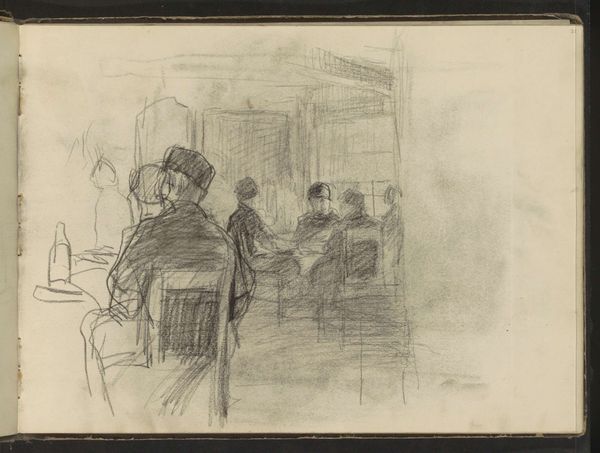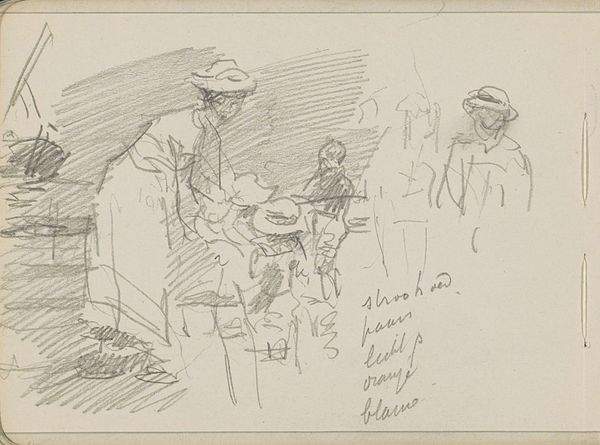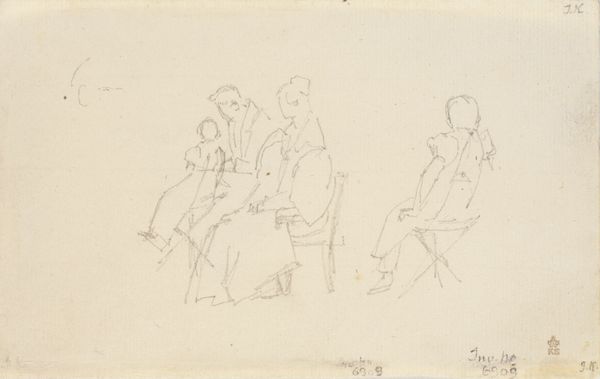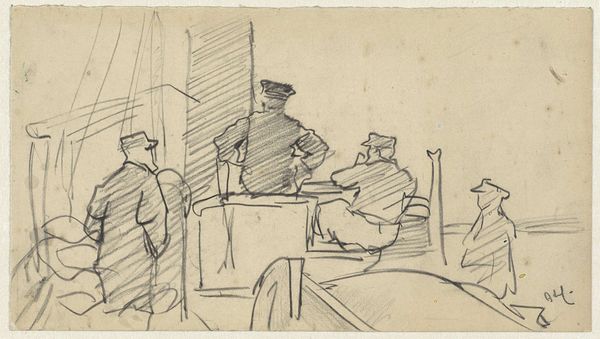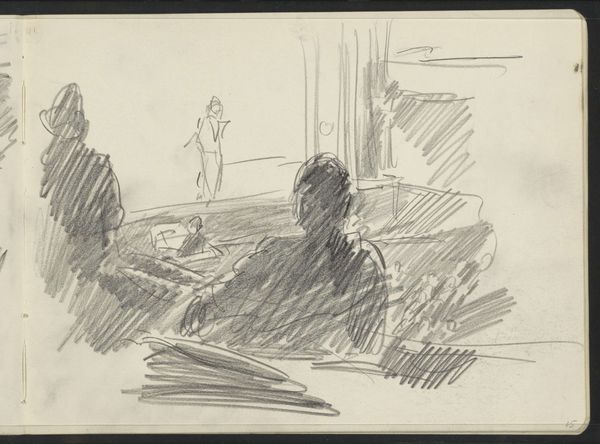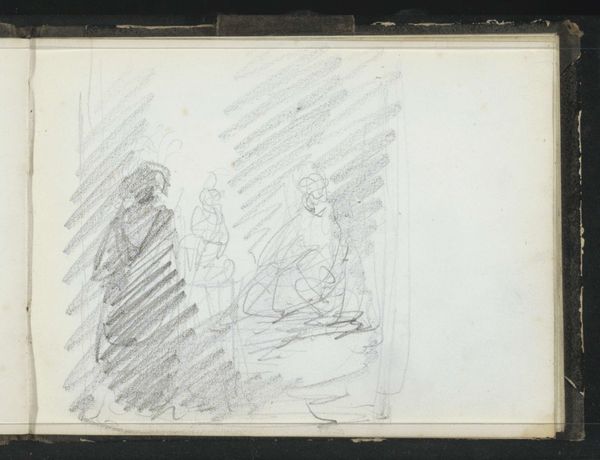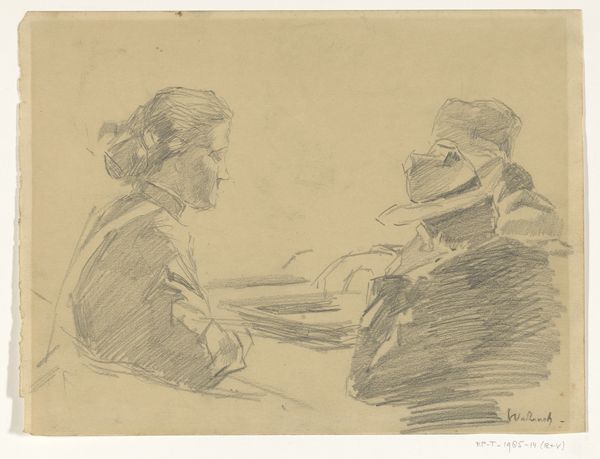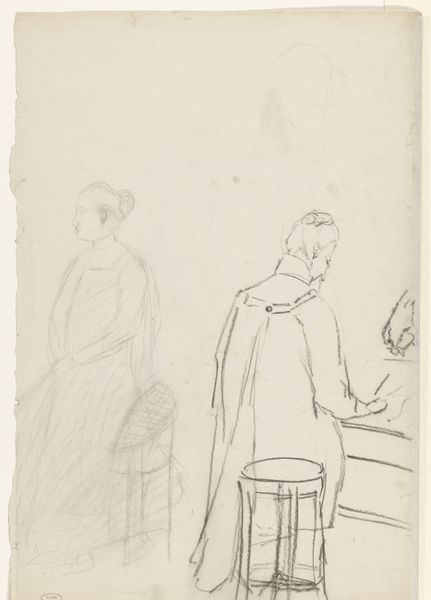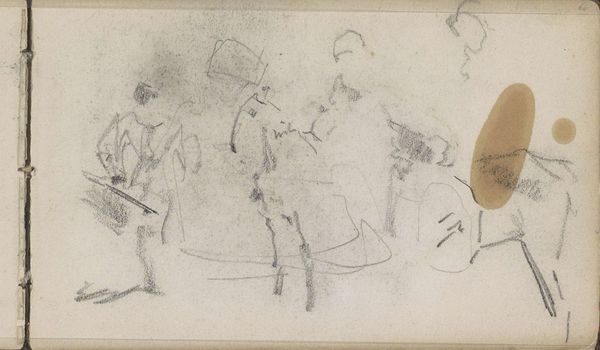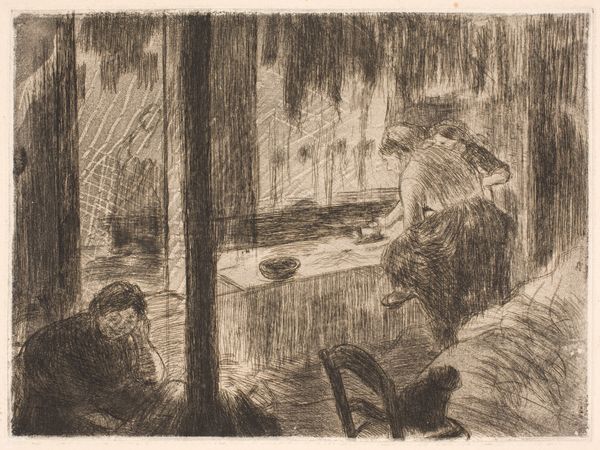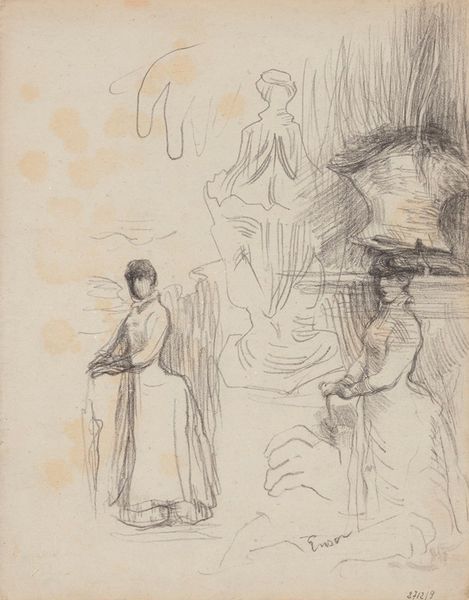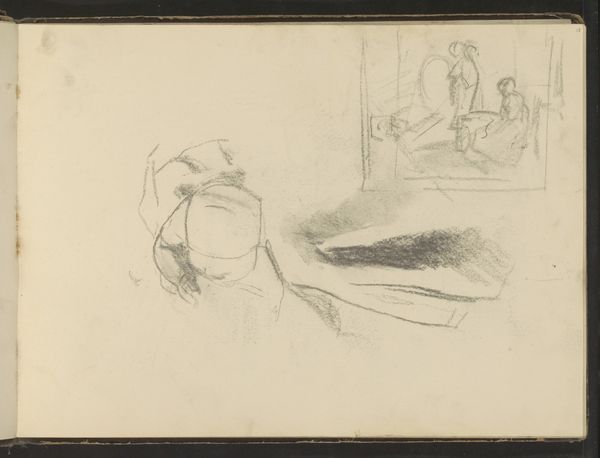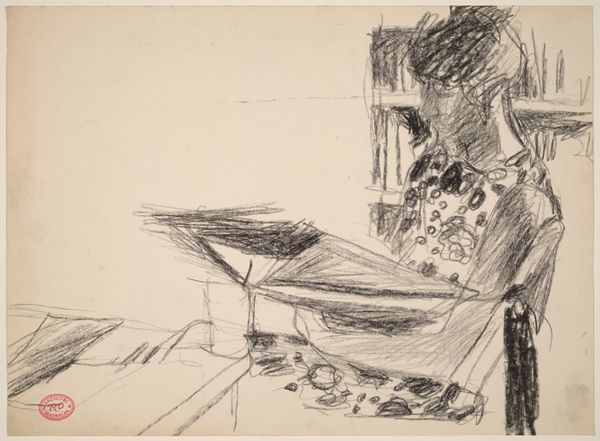
Dimensions: height 124 mm, width 135 mm
Copyright: Rijks Museum: Open Domain
Curator: Let's discuss this pencil sketch by Johan Antonie de Jonge, titled "Schetsen van twee vrouwen en een manskop," created sometime between 1874 and 1927. What's your initial take? Editor: It feels incredibly intimate and somewhat melancholic, like a glimpse into a private world. The rapid lines and varied levels of detail create a sense of immediacy, as if the artist captured these figures in a fleeting moment. Curator: Indeed. De Jonge’s choice of pencil on paper, a readily available and portable medium, suggests a certain urgency. It speaks to accessibility and the democratization of artmaking, doesn't it? Pencil was, and remains, a basic tool available to all strata of society, cheap in cost and thus accessible for preliminary and quick drawings, sketching studies for future art pieces. Editor: Absolutely, and thinking about the period, we have to consider who these women might have been and what their social standing was. Their postures and clothing could indicate specific roles or expectations placed upon them during that era. Were these sketches born of social observation or something else entirely? I see hints of gendered constraint. Curator: That’s a crucial consideration. The medium itself - a simple pencil - when placed within a socioeconomic framework, offers interesting avenues of inquiry regarding how artists captured likeness during the advent of modernism. There is almost no preparatory step in creating this, thus an artist has no boundaries that materials can inflict on their artistic freedoms. Editor: The unfinished quality prompts us to question notions of completion and perfection. De Jonge subverts those historical norms through the very visible process, leaving the viewer with a feeling of unease or anticipation for the complete rendering, that might never come. The pencil, by nature easily erasable, allows an openness. Curator: A certain unfinished quality encourages contemplation of labour – the artistic process. You are right, his choice pushes us to ask: is the final product as relevant as the processes enacted, and the physical labor performed, by the artist in bringing forth their creation? Editor: Perhaps de Jonge meant to liberate us from the strictures of a highly polished, bourgeois art form, instead offering fragments of lives caught in quiet moments of reflection. Curator: Yes, from the texture of the paper to the grain of the pencil, his art becomes the tangible trace of intellectual and emotional engagement of the creator. A quiet subversion, I think. Editor: Ultimately, these seemingly simple sketches spark layered reflections on process, personhood, and the socio-political atmosphere in which De Jonge worked. It's both immediate and incredibly thought-provoking.
Comments
No comments
Be the first to comment and join the conversation on the ultimate creative platform.
